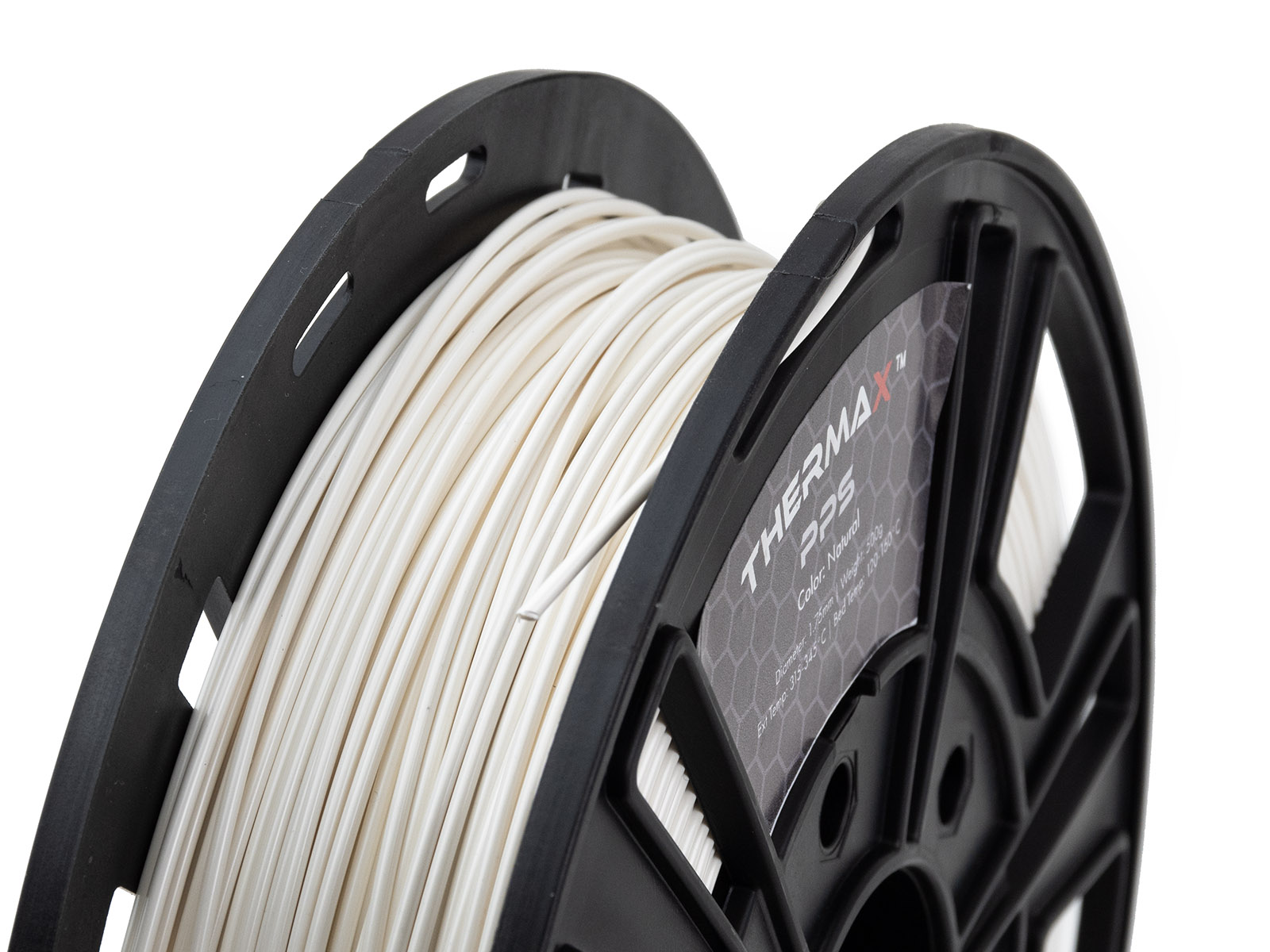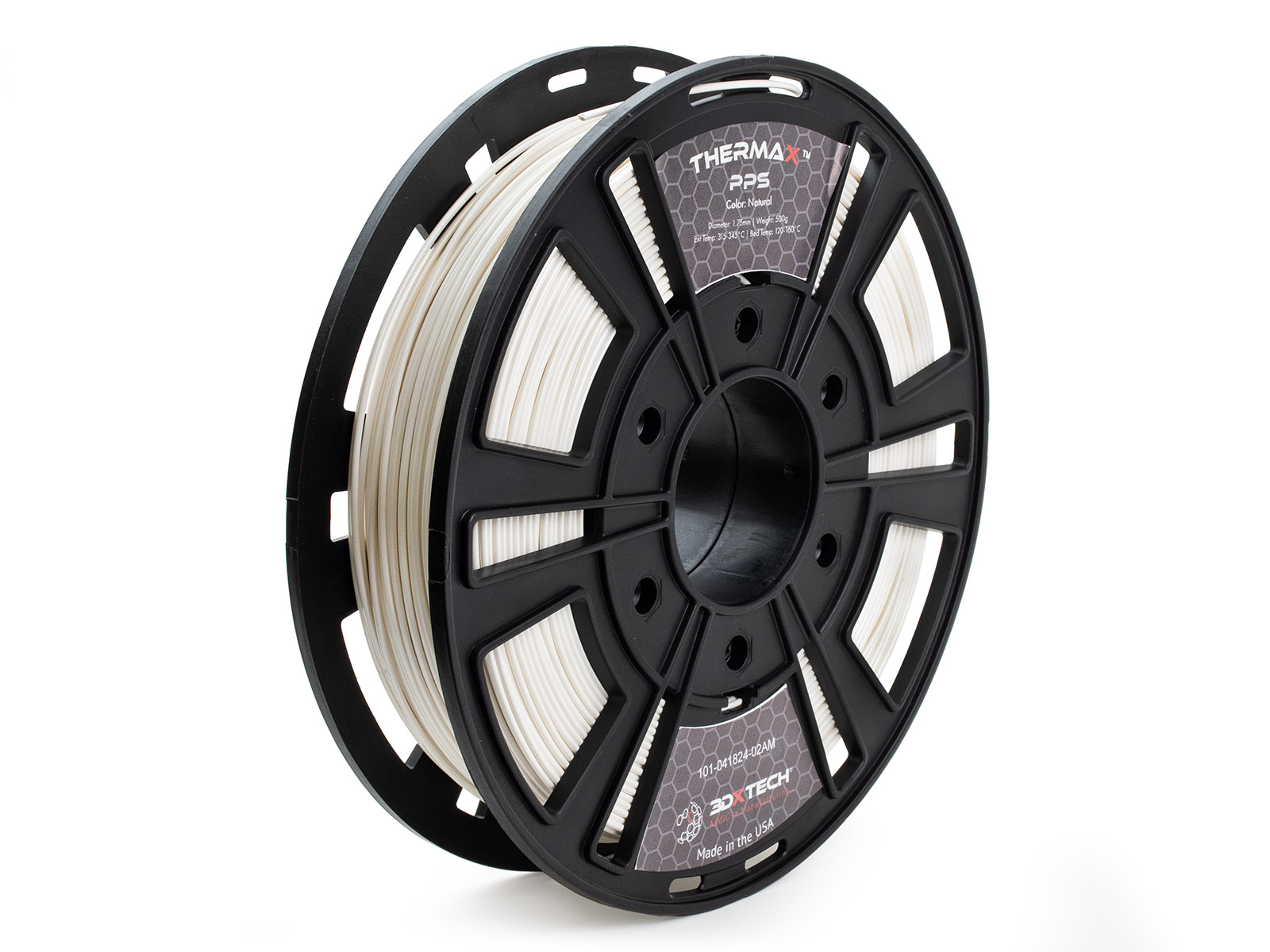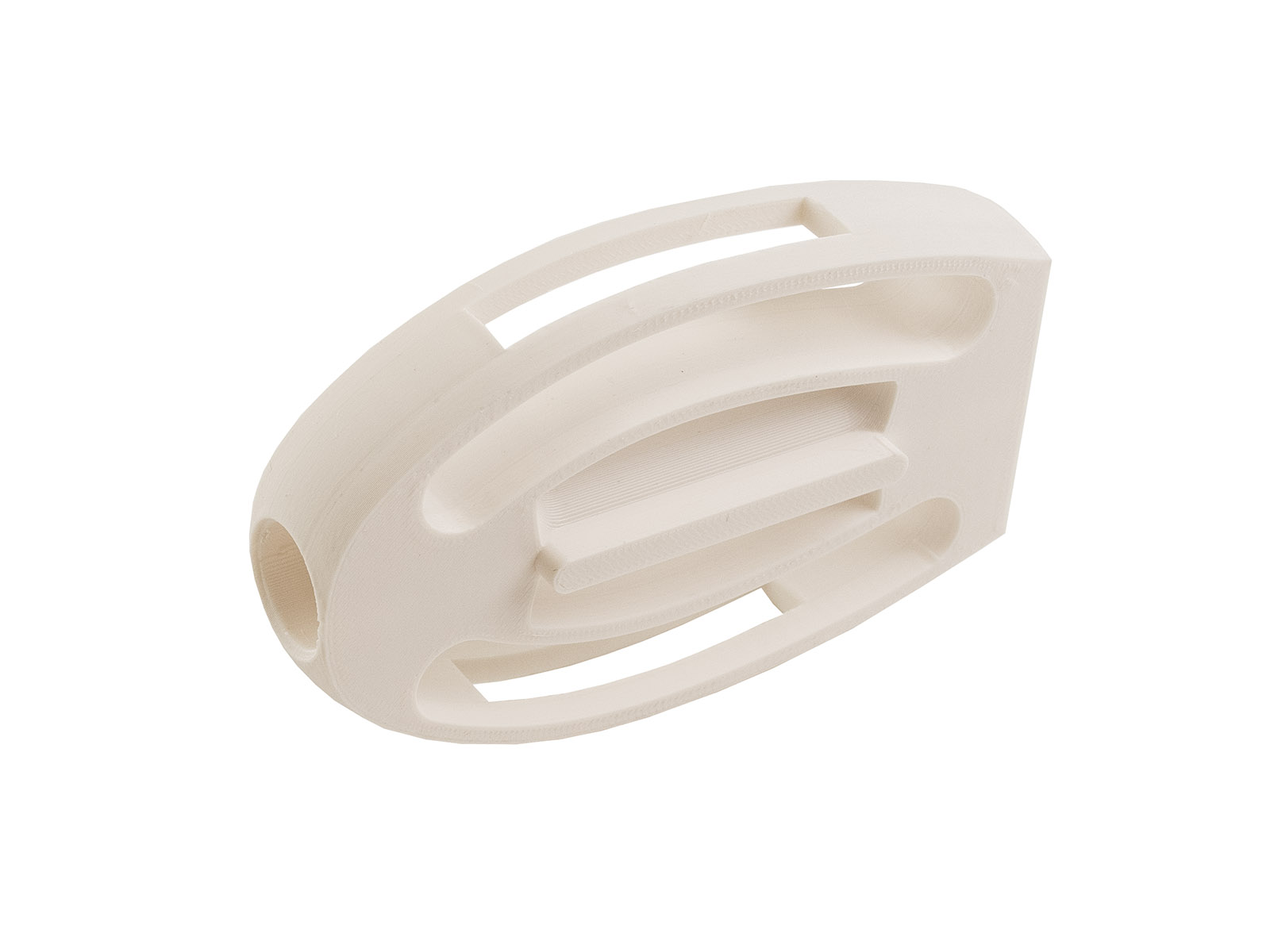PPS or Polyphenylene sulfide is a semi-crystalline technical thermoplastic material suitable for 3D printing characterized by high resistance to heat and chemicals. The main characteristic of this material is the chemical resistance, particularly to acids, alkalis, and solvents. It is highly resistant to organic solvents and does not dissolve in any known solvent below 200°C.
With thermal stability from -100°C to over 200°C, PPS is an ideal choice for applications requiring resistance in extreme temperatures. This material has excellent mechanical properties, including high toughness, strength, and wear resistance, however, it can be more brittle than materials like PSU and PPSU. Its outstanding electrical characteristics, such as high dielectric strength and low dissipation factor, further increase its attractiveness for electrical and electronic applications.
Recommended nozzle temperature: 330 - 370°C
Recommended bed temperature: 120 - 150°C
|
Pros |
Cons |
|---|---|
|
✔ High-temperature resistance |
✖ Higher cost |
|
✔ Exceptional chemical resistance - |
✖ Prone to warping |
|
✔ Resistance to radiation |
✖ Requires drying |
|
✔ Suitable insulating material |
✖ Requires adhesives to increase adhesion to the |
| ✔ Self-extinguishing material |
✖ Removing supports can be difficult |
| ✔ Dimensional stability during printing |
|
| ✔ Low moisture absorption |
|
Tips for successful printing
It is essential to keep the filament dry, otherwise, its mechanical properties will significantly deteriorate. Despite the low moisture absorption, we recommend drying the filament for at least 4 hours at 110°C before printing and then using a dry box. Printing this material requires an enclosed and heated chamber with a minimum temperature of 65°C.
Heated chamber
An actively heated chamber is necessary to print this material with a temperature of 65°C or higher. A heated chamber is essential for printing high-temperature materials in FFF, due to several reasons:
- Prevents deformation: Maintains stable temperatures to reduce deformation and cracking.
- Improves layer adhesion: Supports stronger connections between layers.
- Preserves the properties of the material: Ensures proper crystallization and strength of the material.
- Prevents clogging: Prevents premature cooling of fibers and prevents problems with extrusion.
- Improves accuracy: Reduces thermal expansion and improves dimensional accuracy.
Print surface preparation
For printing, a special adhesive must be applied to the print bed (e.g., MAGIGOO HT) for the perfect first layer. We recommend using the adhesive in multiple layers.
Samples
 |  |
 |  |